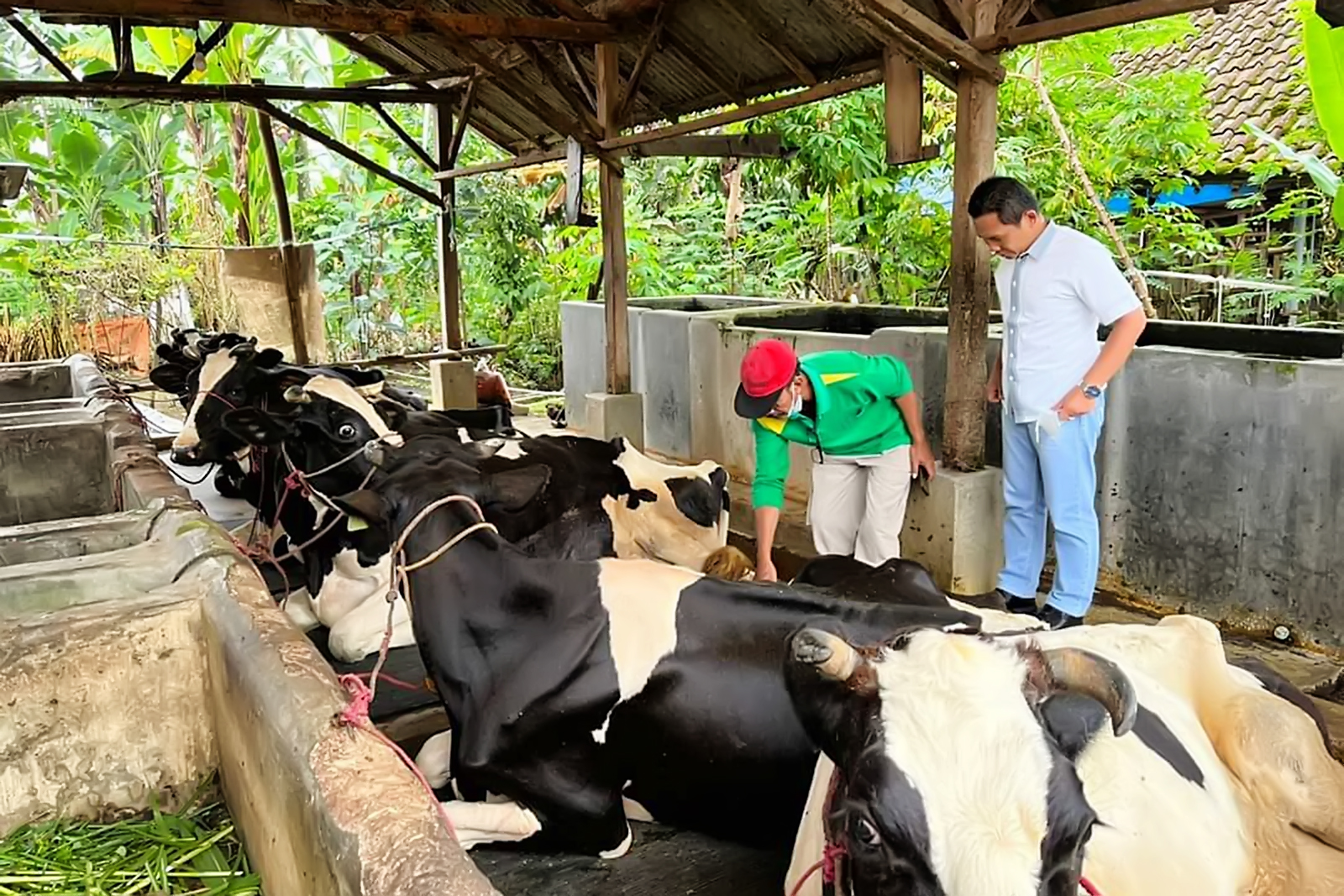In Senduro district, East Java, dairy farmers operate under difficult conditions despite fertile volcanic soil. Gosyim Romansyah, who manages 10 cows, produces about 100 liters of milk daily and earns around IDR 12 million (US$730) monthly. He said increasing production is difficult due to limited feed.
“If I increase the cow population, I have to increase the amount of grass. It is easy to buy cows, but procuring their feed is difficult,” he said. During the dry season, grass becomes scarce, limiting herd expansion. Land competition with palm oil, rice, and other crops further restricts grazing.
Government Plans to Import Two Million Cattle
To reduce milk imports and meet rising demand, Indonesia plans to import 200,000 beef cattle and 200,000 dairy cows in 2025. The number is expected to grow to two million by 2029 for breeding. Indonesia currently imports over 80% of its milk.
The government’s free-meal program, targeting over 80 million students and vulnerable groups, is expected to increase milk consumption. The Agriculture Ministry estimates a production gap of 8.5 million tons—4.9 million tons for regular consumption and 3.6 million tons for the program.
Local Farmers Demand Fair Market Access
Some farmers accuse milk processors of favoring cheaper imported milk. In September 2024, dairy farmers in Central and East Java protested by bathing themselves in milk. They urged the government to prioritize local supply and provide better support.
East Java Governor Khofifah Indar Parawansa responded, “(We must) make sure that milk production by farmers must be absorbed in commercial prices first. Only then can the difference be imported.”
Brazil Added to Cattle Import Sources
Indonesia recently approved live cattle imports from Brazil, joining existing sources such as Australia, New Zealand, and the United States. The move aims to ensure a broader supply for the nation’s cattle needs.
According to National Nutrition Agency head Dadan Hindayana, the long-term objective is to boost the domestic cattle population. “The cow population in Indonesia is still low. Now, cows are gradually being imported to increase the population. It is hoped that in every region… there will be a cattle farm to supply milk that is truly local,” he said.
Health Risks and Land Readiness Raise Concerns
Past import attempts faced challenges related to suitable land and feed. To support the new cattle, the government has allocated over 90,000 hectares across Central Sulawesi, South Sulawesi, and South Kalimantan.
Misbahul Munir, a cattle farmer in East Java with a 200-hectare estate, supports the plan but stresses the need for veterinary support. “If there's disease, there must be a veterinarian (to deal with it). So, I will request an expert like that whom we can collaborate with,” he said.
He warned that importing cattle without support would burden farmers. “If the partnership is just to bring in the cattle, then it will just be a burden on us. We will not be able to afford the human resources for it.”
In December 2024, East Java experienced a foot and mouth disease outbreak. By January 2025, over 14,630 animals were infected, and 338 deaths were reported across 11 provinces. A vaccination program was launched to contain the spread.
PHOTO: KOMINFO/PORTALBERITALUMAJANG
This article was created with AI assistance.
Read More






 Sunday, 07-12-25
Sunday, 07-12-25







